25 October 1778 Sunday
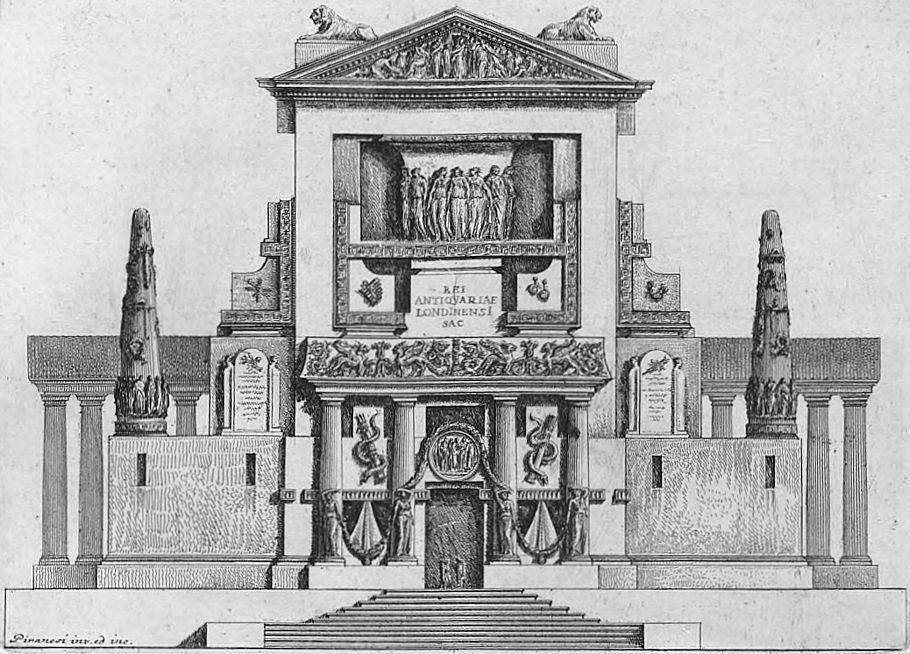
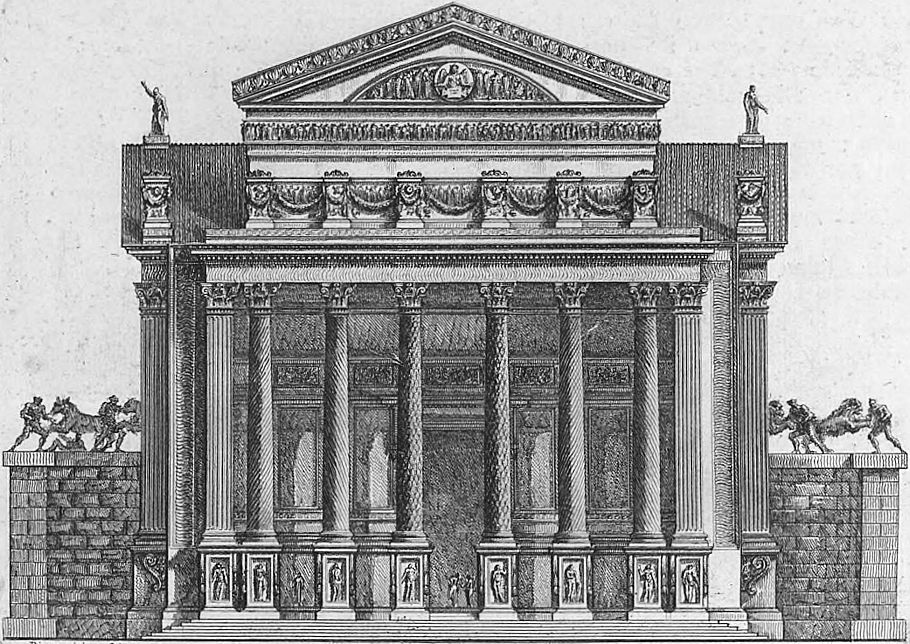
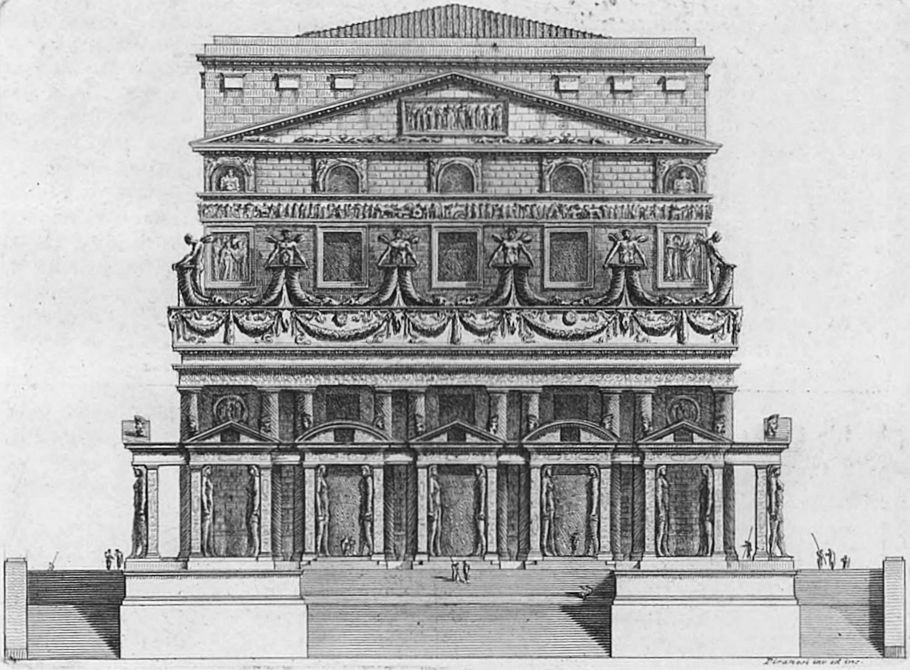
25 October 1812 Sunday
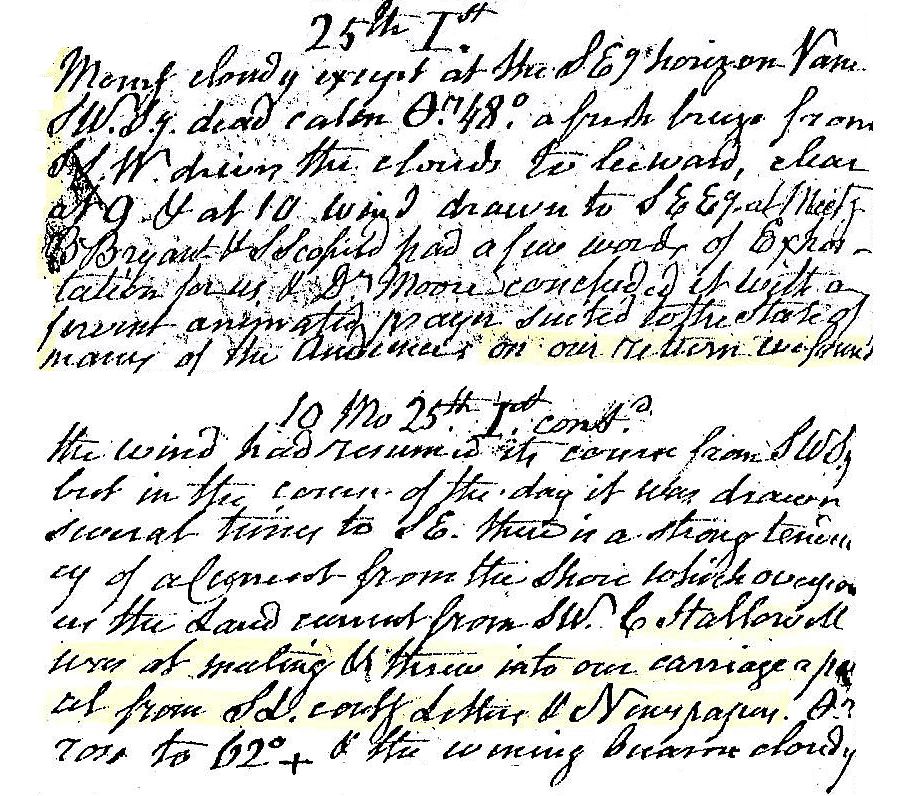
Mostly cloudy except at the S easterly horizon. Vane SW southerly, dead calm 48°, A fresh breeze from SSW drives the clouds to leeward, clear at 9 and at 10 wind drawn to SE easterly. At meeting B. Bryant and S. Scofield had a few words of exhortation for us and Dr. Moore concluded it with a fervent animating prayer suited to the state of many of the audience. On our return we found the wind had resumed its course from SW southerly, but in the course of the day it was drawn several times to SE. There is a strong tendency of a current from the shore which ........[?] the land current from SW. C. Hallowell was at Meeting and threw into our carriage a parcel from S.L. containing letters and newspaper. Temperature rose to 62°+ and the evening became cloudy.
25 Octover 1994
113.
With the diaphragm there is first of all separation. The diaphragm separates the chest from the abdominal cavity. The diaphragm fluctuates; it contracts and relaxes. The diaphragm's movements causes changes in pressure and changes in size of the abdominal and thoracic cavities. By this pressure change, the diaphragm plays an important role in breathing, defecation, and parturition (birth). The diaphragm is attached to the lower six or seven ribs.
114.
I want to make note of the lack of outer skeleton corresponding to the area between the hip bone and the rib cage. I am first thinking of this area and time as one of great freedom, non-constricture. I have to look at a diagram to get a good idea of what years correspond to this area. The idea of freedom or non-constricture corresponds to the area of the body where men become fat (mainly because there is nothing, like a rib cage, to hold the fat in). This area also corresponds to the area of pregnancy, again because there is nothing like a rib cage to constrict the expansion of the body. So it can now (so far) be concluded that there is a connection between a relative lack of skeleton and the activity of expansion, looseness, and the freedom to execute expansion and looseness. I'm not sure yet if contraction (constriction?) is an important part of the scenario. What I do want to stress is that now that I have made some conclusions about the effect of a lack of skeleton, I may then make relative analogies within areas where skeletons do play very important parts in the operation of the story.
25 October 2008
front-line ideas + regional tradition = potential for a design culture of thinking/making?
Regarding Jarzombek's "Un-Messy Realism", what's important comes at the end:
"We have to realize that our discipline is undergoing an inner transformation of historical import and that sooner or later it will yield an educational system far different from the one we grew up with in the last twenty years. But whether this is for better or worse is difficult to ascertain since there is also a collusion of silence in academe about where the ghost ship is heading."
The "collusion of silence", like a law of silence (utilized by various emperors) is an effective form of control.
More likely it is an outer transformation that is bringing about the inner transformation.
A "collusion of silence" can also breed ignorance via ignoring.
"Official art culture is much more effective in its control of history than Republican strategists, for it knows that the best way to treat contradictory material is not to rail against it, but simply to pretend it didn't happen." --Mike Kelley, 1992
Be watchful of the inner and the outer to see the full picture.
25 October 2009
Really, what boundaries have you pushed?
Might we conclude that pushing boundaries is uncommon, and muddling-through, (drunken) rage, and even pretense are common?
Does pushing boundaries at least require a metabolic (destructive/creative, challenging/advancing) imagination?
25 October 2016

25 October 2018

25 October 2020

25 October 2022 Tuesday
Audubon and Latrobe as true first moderns as well. And Hannah Fisher Price and Hélène Gregoroffsky Fisher as true first modern women. All leading new paradigm lives. And, believe it or not, New Harmony, even.
25 October 2023 Wednesday
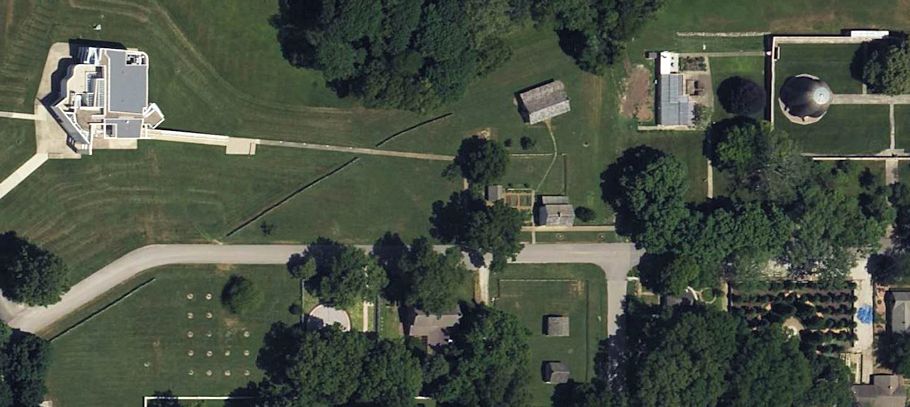
I've been to New Harmony. It was a bright, blue-sky Friday afternoon with scattered puffy white clouds, probably late July to early August 1978. I and a fellow H.A.B.S. (Historic American Building Survey) team member drove from Perry, Missouri down to New Harmony, Indiana. We made the trip specifically to see Richard Meier's newly constructed Atheneum, which was indeed then completely done with construction, but not yet user occupied, and the building was just sitting there unlocked and open without a single person anywhere in sight. The building was great, all the way up to the roof, but the experience was almost eerie and verging on time-warpy. Meier also designed the adjacent clay studio, and Philip Johnson designed the next adjacent Roofless Church, although there now appears to be some roof added. I also recall some log cabin reenactment[?].
"Robert Owen, a Welsh industrialist and social reformer, purchased the town in 1825 with the intention of creating a new utopian community and renamed it New Harmony."
Hannah Fisher Price and Hélène Gregoroffsky Fisher were with Robert Owen on his way to settle and establish New Harmony. In 1978, I already knew of New Harmony from a Planning History class, but I certainly knew nothing of Hannah Fisher Price and Hélène Gregoroffsky Fisher having been there too. I wonder if there is anything more to learn about these women at New Harmony now.
And also now, it's a coincidence of no real consequence, but it's nonetheless peculiar to think that Hannah Fisher and myself may be the only people to have been to New Harmony while also knowing what it is like to live at Ury estate/farm. [Very Odds of Ottopia.]
|